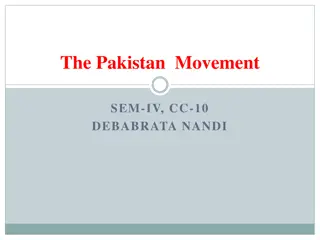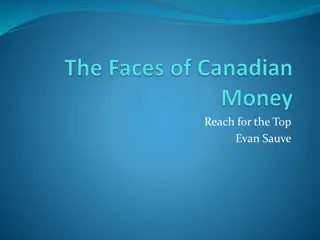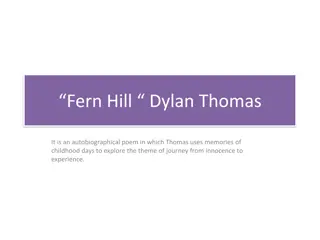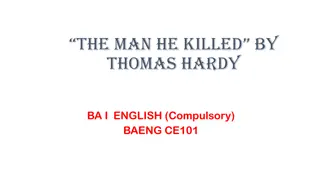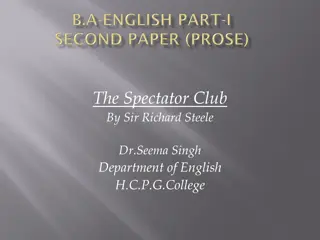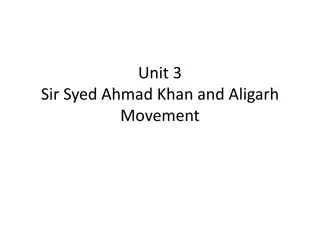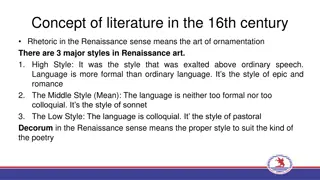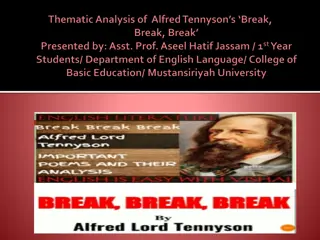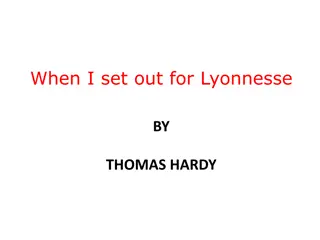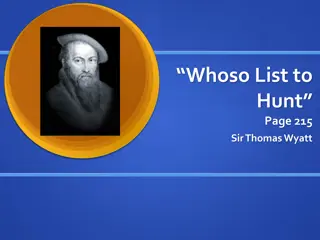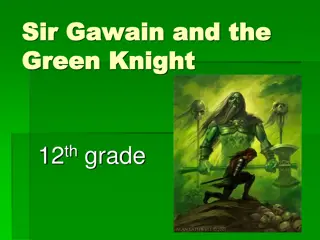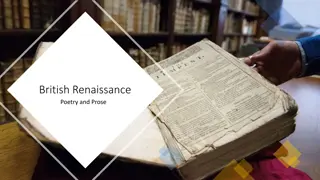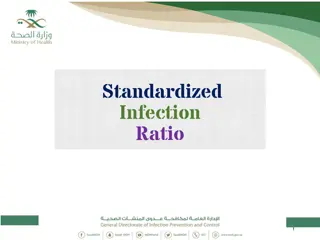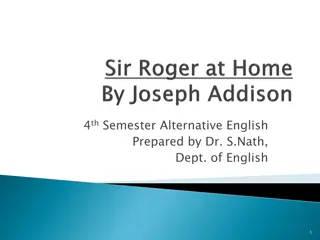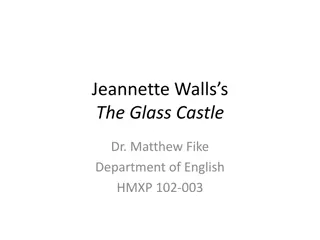Sir Thomas Wyatt and His Poem "Whoso List to Hunt
Sir Thomas Wyatt, a prominent figure in English literature, is credited with popularizing the Petrarchan Sonnet in England. His poem "Whoso List to Hunt" reflects his feelings towards Anne Boleyn, depicting her as a deer and Henry VIII as "Caesar." Through intricate imagery, Wyatt conveys personal disappointment in his pursuit of the unattainable quarry, while also acknowledging the futility of chasing after someone who is already claimed by a greater power. The poem delves into themes of desire, submission, and the complexity of human emotions.
Download Presentation

Please find below an Image/Link to download the presentation.
The content on the website is provided AS IS for your information and personal use only. It may not be sold, licensed, or shared on other websites without obtaining consent from the author.If you encounter any issues during the download, it is possible that the publisher has removed the file from their server.
You are allowed to download the files provided on this website for personal or commercial use, subject to the condition that they are used lawfully. All files are the property of their respective owners.
The content on the website is provided AS IS for your information and personal use only. It may not be sold, licensed, or shared on other websites without obtaining consent from the author.
E N D
Presentation Transcript
Whoso List to Hunt Page 215 Sir Thomas Wyatt
Sir Thomas Wyatt 1503-1542 Sir Thomas Wyatt is credited with making the Petrarchan Sonnet popular in England. He is also famous for his feelings for Anne Boleyn, described in the following poem, which refers to Anne as the deer, and Henry VIII as "Caesar . "He was a diplomat in the service of Henry VIII, traveling to Italy, France and Spain. Wyatt was imprisoned for his affair with Anne Boleyn, and imprisoned a second time for treason after the fall of Cromwell.
"Whoso List To Hunt by Sir Thomas Wyatt Whoso list to hunt, I know where is an hind, But as for me, h las, I may no more. The vain travail hath wearied me so sore, I am of them that farthest cometh behind. Yet may I by no means my wearied mind Draw from the deer, but as she fleeth afore Fainting I follow. I leave off therefore, Sithens in a net I seek to hold the wind. Who list her hunt, I put him out of doubt, As well as I may spend his time in vain. And graven with diamonds in letters plain There is written, her fair neck round about: Noli me tangere, for Caesar's I am, And wild for to hold, though I seem tame. Whoso list: whoever wishes hind: female deer h las: alas vain travail: futile labor deer: playing on the word "dear Sithens: since Noli me tangere: "touch me not"
Sir Thomas Wyatt continued Wyatt expresses personal disappointment and weariness in the great chase, while still admiring a quarry that has both eluded him and is now possessed by a greater man (Caesar). All in sonnet form. The poet tells of his weariness in hunting a female deer (hind). He asserts that he is not giving up, just falling further behind; his wearied mind is still game. But as she continues to flee, he finally leaves off, recognizing his hunt to be as fruitless as seeking to catch the wind in a net. And he counsels others similarly inclined that they would be spending their time in vain.
Sir Thomas Wyatt continued Of course, there is more than hunting deer going on here, and the imagery and the vocabulary take a turn for the more personal in the last four lines. For this fleeing female wears around her fair neck a necklace with diamonds spelling out the last couplet of the poem: a phrase from the Vulgate: 'touch me not', for I belong to Caesar (or Henry VIII, as the case may be). The final line captures both the passion and the yoked submission suggested by the diamond necklace, both of great interest to the speaker, who can appreciate both but enjoy neither.
Anne Boleyn (beheaded by King Henry VIII in 1536) The word "fleeth" (meaning "to flee"), used in the sonnet, suggests Anne did not entirely welcome Wyatt's attentions, and some of her contemporaries confirmed it. This is important because Anne Boleyn was found guilty of adultery and executed for it. Thomas Wyatt was one of the men she was accused of having been with, and history has speculated on this ever since. In either event, no one was able to provide substantiated proof that Anne Boleyn ever committed adultery or had a pre-marital affair with Thomas Wyatt, or with anyone else. That one word in this poem might validate her claims of innocence.
"Whoso List To Hunt by Sir Thomas Wyatt Whoso list to hunt, I know where is an hind, But as for me, h las, I may no more. The vain travail hath wearied me so sore, I am of them that farthest cometh behind. Yet may I by no means my wearied mind Draw from the deer, but as she fleeth afore Fainting I follow. I leave off therefore, Sithens in a net I seek to hold the wind. Who list her hunt, I put him out of doubt, As well as I may spend his time in vain. And graven with diamonds in letters plain There is written, her fair neck round about: Noli me tangere, for Caesar's I am, And wild for to hold, though I seem tame. Whoso list: whoever wishes hind: female deer h las: alas vain travail: futile labor deer: playing on the word "dear Sithens: since Noli me tangere: "touch me not"
Selection Quiz: Whoso List to Hunt Sir Thomas Wyatt
Selection Quiz: Whoso List to Hunt Sir Thomas Wyatt 1. In Sir Thomas Wyatt s Whoso List to Hunt, which of the following images represents the woman the speaker wants to pursue? a. The vain travail b. diamonds in letters plain c. the deer d. my wearied mind
Question 2 The tone of Whoso List to Hunt is a. optimistic b. resigned c. neutral d. patient
Question 3 Whoso List to Hunt is a a. Spenserian sonnet b. Petrarchan sonnet c. Shakespearean sonnet d. Petrarchan conceit
Quiz continued Written Response (25 points) On a separate sheet of paper, write a paragraph in which you discuss how Whoso List to Hunt, would change if the main conflict did not exist. Would there still be a poem? If so, what would the poem s message be? Support your ideas with at least two details from the chosen poem.




